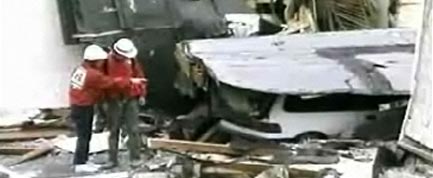Midwest Fault System Could Be Shutting Down

A crack in the earth that resulted in the biggest quakes known in the center of the United States — and which have raised fears of a "big one" sometime this century — might actually be in the process of shutting down, scientists now suggest. The new research on this earthquake zone, dubbed the New Madrid fault system, could change what we know of how quakes in the middle of continents work. Three of the largest earthquakes in North America recorded in history occurred at the New Madrid system over the course of two months from 1811 to 1812. These magnitude 7 events shook the earth with enough power to force the Mississippi River to temporarily flow backward. This earthquake zone threatens parts of Illinois, Indiana, Missouri, Tennessee, Arkansas, Mississippi and Kentucky. It has been rumbling again in recent years, leading researchers to ask whether another devastating quake could hit in upcoming decades. A magnitude 5.2 earthquake on a northeastern extension of the system in southern Indiana was felt from Kansas to Georgia in 2008. To see how active the New Madrid system is, scientists recently used nine GPS antennas mounted on the ground over the heart of the fault in southern Missouri and Tennessee to investigate the earthquake zone over the course of eight years. "GPS technology can measure movement to the thickness of a fishing line," said researcher Seth Stein, a seismologist at Northwestern University in Evanston, Ill. The amount of movement they detect in the earth is a sign of how much energy is trapped in the system, which sheds light on when the next earthquake might come, Stein explained. "Building up energy for an earthquake is like saving money for a big purchase," Stein said. "You put money in over a long period of time and then spend it all at once and have to start saving again." The scientists discovered the zone's faults moved far less than previously expected given the 500- to 1,000-year cycle of major earthquakes there. The ground surrounding the fault system is moving at a rate of less than 0.2 millimeters per year, Stein said. (The magnitude 5.2 quake last year happened hundreds of miles away, too far and too weak to affect the researchers' measurements.) The fact that little to no motion is seen there suggests an earthquake may be long in coming. "The slower the ground moves, the longer it takes until the next earthquake, and if it stops moving, the fault could be shutting down," Stein said. "We can't tell whether the recent cluster of big earthquakes in the New Madrid is coming to an end. But the longer the GPS data keep showing no motion, the more likely it seems." Evidence in the rocks suggest major earthquakes at the New Madrid system occurred not just in 1811 and 1812, but also in 1450 and 900, roughly 500 years apart. Scientists had previously forecast that another 'big one' would happen again in coming years, expecting earthquakes there to recur with a fairly steady frequency as they do at the San Andreas system in California. These new findings suggest the earthquake hazard model "that works well for faults at the boundaries of tectonic plates, such as the San Andreas fault, does not apply to the New Madrid fault," said lead researcher Eric Calais, a geophysicist at Purdue University at West Lafayette, Ind. Faults at plate boundaries seem to move at a rate that matches the rate of earthquakes, making past events "a reliable guide to the future," Calais explained. However, with faults that are inside continents, such as the New Madrid system, "the past is not necessarily a key to the future, which makes estimating earthquake hazard particularly difficult." One possible explanation for the behavior of faults like the New Madrid is that earthquakes in these areas recur in clusters and then die down, with that energy traveling instead to other faults inside the continent. "If New Madrid is actually shutting off, other faults in the Midwest could be awaking," Calais told LiveScience. He and Stein detailed their work in the March 13 issue of the journal Science. Seismologist Susan Hough at the U.S. Geological Survey office in Pasadena, Calif., who did not participate in this study, said Calais and Stein "have done a very nice job of looking critically at the data we have and considering the implications for hazard." Hough cautioned that the question of whether the New Madrid system is "officially, sincerely, stick-a-fork-in-it dead" remains open, with some other researchers suggesting that large earthquakes could still happen with little evidence of pent-up energy in the form of warping at the surface. "You might have these hidden time-bomb earthquakes waiting to happen and have a very hard time detecting them, even with GPS," Hough said. "That's kind of the scariest scenario."
- Video - How to Survive the Coming California Earthquake
- The Deadliest Earthquakes
- The Big Earthquake Quiz
Sign up for the Live Science daily newsletter now
Get the world’s most fascinating discoveries delivered straight to your inbox.










